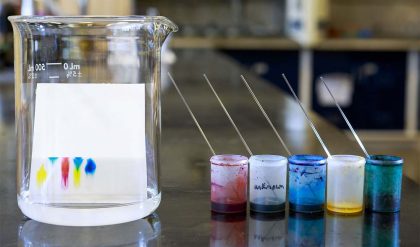Viscoelasticity
Viscoelasticity of a thermoplastic refers to the time-dependent nature of deformation under an applied stress.
The stress required to deform the polymer is related to both the level of strain as well as the rate of strain.
When a polymer is deformed at a rapid rate there is not enough time for the polymer chains to untangle and thus the polymer behaves in a brittle manner with low fracture toughness.
If stress is applied over a long period of time then viscous flow occurs and the polymer exhibits large amounts of strain or creep.
Glassy State
At relatively low temperatures the viscosity of a polymer is so high that only small relative movements of the molecular chains are possible.
Elastic deformation is limited to stretching of the bonds in their current state, which implies a high modulus of elasticity.
Glassy polymers are rigid and brittle but are also stronger, more dimensionally stable and have a greater resistance to creep.
Rubbery State
Amorphous polymers, above Tg, may take either a rubbery or leathery form depending on their temperature.
Just above the temperature at which viscous flow begins the polymer takes on a rubbery form. The polymer has some strength and elasticity. Under an applied stress both elastic and plastic deformation occur. Chain movement is easy and therefore large elongations are possible permitting easy extrusion and formation of complex shapes.
At a lower temperature the polymer is stiffer and stronger and takes on a more leathery form. In this case the chains do not move over each other so rapidly and therefore recovery of the structure after deformation is time-dependent.
Liquid State
Above about 1.4 Tg the polymer exists in an entirely viscous state without any elasticity. The chains are free to move over one another even without the presence of an external force.
In this state the polymer is suitable for casting and forming processes.
At very high temperatures the polymer may degrade as the covalent bonds within the polymer network are destroyed. At this temperature the polymer is most likely to burn or char.

